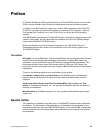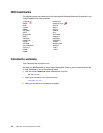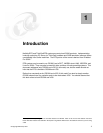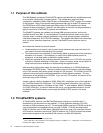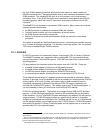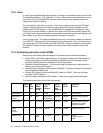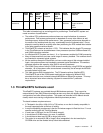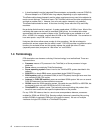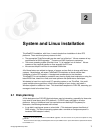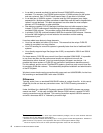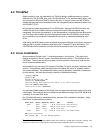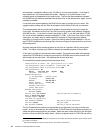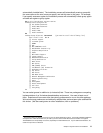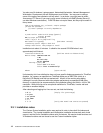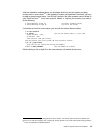6 S/390 PID: ThinkPad Enabled for S/390
It should probably have the integrated Ethernet adapter, and possibly a second (PCMCIA)
Ethernet adapter or a PCMCIA token ring adapter (depending on your requirements).
ThinkPad models change frequently and the above requirements may need to be adjusted to
match current offerings. The author used a T20 ThinkPad (which met the other requirements)
and had no problem with it. However, from a formal support viewpoint, only selected
ThinkPad models should be used. At the time of writing, these were the A21p and A22p
machines.
No particular disk drive size is required. A system needs about 1.5 GB for Linux. Most of the
remaining disk space can be used for emulated S/390 drives. An emulated drive takes
approximately the same number of bytes on the ThinkPad disk as are available on a “real”
drive. A 3390-3, for example, requires about 2.8 GB on the ThinkPad disk. It is convenient to
have extra space—say 2 GB—left for a work area.
Using two disk drives allows some overlap of drive operations. We did not attempt to
measure this and we suspect that the effect is small. FLEX-ES provides very effective cache
functions for emulated drives and this greatly reduces the actual disk drive I/O rates
(especially seek rates) compared to “real drives” on “real S/390s.”
1.4 Terminology
EFS descriptions can become confusing if the terminology is not well defined. These are
important terms:
Processor means a PC processor in the ThinkPad (or a Server processor in larger
platforms).
Server means our underlying ThinkPad hardware.
Server operating system means Linux for the ThinkPad/EFS system described in this
redbook.
S/390 CPU (or simply CPU) means an emulated single S/390 CPU engine.
S/390 system means an emulated S/390 (in the EFS system) that might have more than
one emulated S/390 CPU engine.
Instance (or FLEX-ES instance) means an emulated S/390 system. We can run several
FLEX-ES instances if we have sufficient resources.
OS/390 means the S/390 operating system. We could also use VM/ESA or VSE/ESA, but
we elected to work only with OS/390 and z/OS (31-bit mode).
ThinkPad/EFS is a generic name. The business partners providing this product often
have their own names for their specific implementation of the product.
For any FLEX-ES instance, there is a one-to-one correspondence between processors
enabled for S/390 and S/390 CPUs. Running multiple instances is something like running
multiple OS/390s in separate LPARs (but is not quite the same). We can run multiple
instances of single-CPU S/390s in a ThinkPad/EFS system.




